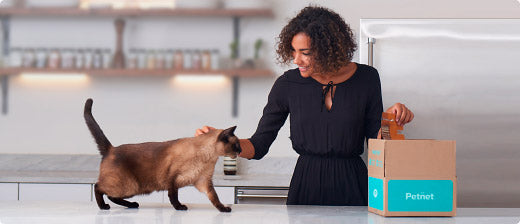This week in our series on Getting to Know Your Cat Breed we are featuring the Ragdoll Cat. According to the Cat Fancier’s Association, the Ragdoll is the 2nd most popular cat breed.
Life expectancy: 12 – 17 years
Size: Ragdolls are one of the largest cats, weighing in between 10 -15 lbs for females and 15-20 lbs for males.
Color: Ragdolls are known for their beautiful blue eyes and typically have a long white or beige soft and fluffy coat that sheds very little. Their coloring is typically bi-color, or shades of white with an evenly distributed solid color or white with points of color on the mask, ear, tail or paws.
Origins: The Ragdoll is a recently developed breed created by Ann Baker in California in the 1960’s. She initially bred a stray long-haired white cat with a black & white male. She developed the line by specifically breeding the kittens from that first litter with similar cats with the docile personalities and the proper coloring, looking for cats with ‘points’ similar to Siamese cats.
Personality: Ragdolls are known for their pleasing personality and affinity for lap sitting. Their names comes from the fact that they enjoy being carried around and offer no resistance when lifted, collapsing like a ragdoll. They love their families and children and will follow you around from room to room. Due to their affinity for their families and their desire to be with you wherever you are, they are sometimes thought to be more like dogs than cats.
Health Issues: Ragdolls are generally healthy cats but have been diagnosed with hypertrophic cardiomyopathy (HCM), a form of heart disease which is hereditary. HCM can be screened for with a DNA test, so be sure and ask your breeder whether their parents were screened. Ragdolls also have a tendency to develop bladder stones.
Fitness/energy level: Ragdolls, are medium energy, laid back cats very much content to sit on the couch with you or better still, in your lap. They’re also quiet cats, communicating in a soft pleasing manner. They are not into climbing furniture or chasing after feather sticks. They can be taught to play fetch or to walk on leash.
Native foods for the Ragdoll Cat: Venison
Rabbit
Catfish
Avocado
Good foods to feed your Ragdoll Cat:
- Ziwipeak, Air Dried Venison
- Fussie Cat, Market Fresh Salmon
- Pronature Holistic, Atlantic Salmon & Brown Rice
Fun facts about the Ragdoll Cat:
- Frankenlouie, a Ragdoll cat is the longest living “Janus” cat. A Janus cat is a cat with two faces. He lived to age 15 after being rescued as a kitten by Marty Stevens.
- Ragdolls were named by Realtor.com as the best apartment cats due to their quietness and gentle personality.
- Ragdolls are known to be intrigued and fascinated by running water. It’s probably why they join you in the bathroom whenever you are showering.
Sources:
http://mentalfloss.com/article/78233/8-friendly-facts-about-ragdoll-cats
http://cattime.com/cat-breeds/ragdoll-cats#/slide/1
https://www.catster.com/cats-101/about-the-ragdoll-cat




 General
General
 General
General
 General
General
